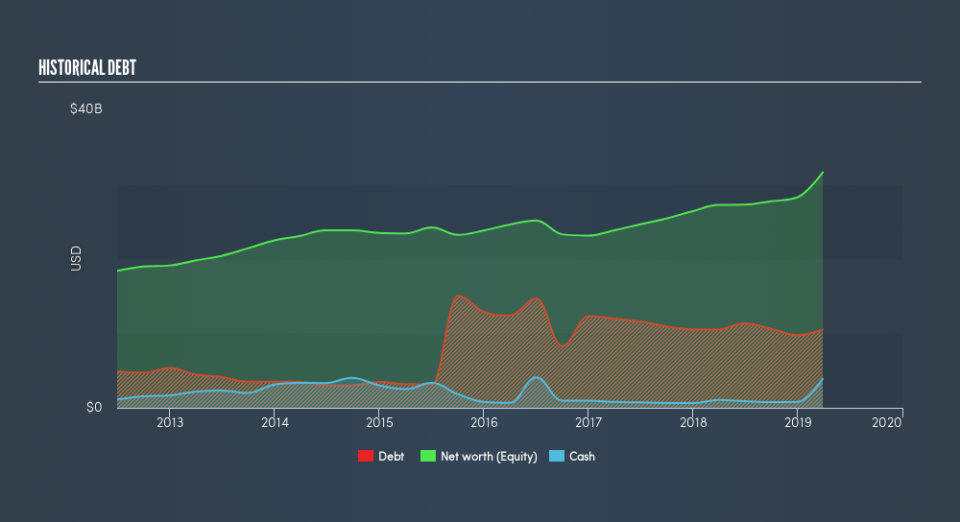Is Danaher Corporation (NYSE:DHR) As Strong As Its Balance Sheet Indicates?

Want to participate in a short research study? Help shape the future of investing tools and you could win a $250 gift card!
Danaher Corporation (NYSE:DHR), a large-cap worth US$93b, comes to mind for investors seeking a strong and reliable stock investment. Most investors favour these big stocks due to their strong balance sheet and high market liquidity, meaning there are an abundance of stock in the public market available for trading. These companies are resilient in times of low liquidity and are not as strongly impacted by interest rate hikes as companies with lots of debt. Using the most recent data for DHR, I will determine its financial status based on its solvency and liquidity, and assess whether the stock is a safe investment.
View our latest analysis for Danaher
Does DHR Produce Much Cash Relative To Its Debt?
DHR has sustained its debt level by about US$10b over the last 12 months – this includes long-term debt. At this current level of debt, DHR's cash and short-term investments stands at US$3.9b , ready to be used for running the business. On top of this, DHR has generated cash from operations of US$3.9b during the same period of time, resulting in an operating cash to total debt ratio of 37%, indicating that DHR’s debt is appropriately covered by operating cash.
Can DHR pay its short-term liabilities?
With current liabilities at US$4.6b, the company has maintained a safe level of current assets to meet its obligations, with the current ratio last standing at 2.18x. The current ratio is the number you get when you divide current assets by current liabilities. Usually, for Medical Equipment companies, this is a suitable ratio since there is a bit of a cash buffer without leaving too much capital in a low-return environment.
Is DHR’s debt level acceptable?
With debt at 33% of equity, DHR may be thought of as appropriately levered. DHR is not taking on too much debt commitment, which can be restrictive and risky for equity-holders. We can check to see whether DHR is able to meet its debt obligations by looking at the net interest coverage ratio. As a rule of thumb, a company should have earnings before interest and tax (EBIT) of at least three times the size of net interest. In DHR's case, the ratio of 29.85x suggests that interest is comfortably covered. It is considered a responsible and reassuring practice to maintain high interest coverage, which makes DHR and other large-cap investments thought to be safe.
Next Steps:
DHR’s high cash coverage and appropriate debt levels indicate its ability to utilise its borrowings efficiently in order to generate ample cash flow. Furthermore, the company exhibits an ability to meet its near-term obligations, which isn't a big surprise for a large-cap. Keep in mind I haven't considered other factors such as how DHR has been performing in the past. I suggest you continue to research Danaher to get a more holistic view of the stock by looking at:
Future Outlook: What are well-informed industry analysts predicting for DHR’s future growth? Take a look at our free research report of analyst consensus for DHR’s outlook.
Valuation: What is DHR worth today? Is the stock undervalued, even when its growth outlook is factored into its intrinsic value? The intrinsic value infographic in our free research report helps visualize whether DHR is currently mispriced by the market.
Other High-Performing Stocks: Are there other stocks that provide better prospects with proven track records? Explore our free list of these great stocks here.
We aim to bring you long-term focused research analysis driven by fundamental data. Note that our analysis may not factor in the latest price-sensitive company announcements or qualitative material.
If you spot an error that warrants correction, please contact the editor at editorial-team@simplywallst.com. This article by Simply Wall St is general in nature. It does not constitute a recommendation to buy or sell any stock, and does not take account of your objectives, or your financial situation. Simply Wall St has no position in the stocks mentioned. Thank you for reading.

